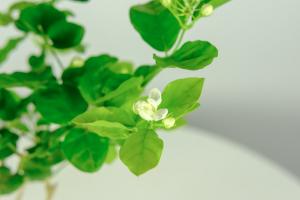How does a Plant Drink Water?
As we all know, plants need water to survive. It is a vital part of their growth and sustenance. But have you ever wondered how plants drink water? In this article, we will delve into the mechanisms and processes that allow plants to absorb and utilize this essential resource.
The Anatomy of a Plant
Before we can understand how plants drink water, we must first take a closer look at their structure. The roots of a plant are responsible for absorbing water from the soil. They consist of millions of tiny root hairs that increase the surface area available for water uptake. The water is then transported through the root cells and up through the stem to the leaves.
The Role of Transpiration
Transpiration is the process by which water is lost from the leaves and stems of a plant. This may seem like a bad thing, but it is actually essential for the survival of the plant. As water evaporates from the leaves, it creates a negative pressure in the leaf cells. This negative pressure, also known as tension, pulls water up from the roots and into the plant. This is known as the transpiration stream.
The Importance of Cohesion and Adhesion
The movement of water through a plant is governed by two important forces: cohesion and adhesion. Cohesion refers to the attraction between water molecules. In other words, water molecules like to stick together. Adhesion, on the other hand, refers to the attraction between water molecules and other surfaces such as the walls of the plant's xylem tubes.
These forces work together to create a continuous flow of water from the roots to the leaves. As water molecules evaporate from the leaves, they pull on the molecules behind them, creating a suction effect that pulls water up through the xylem tubes. The adhesion between the water molecules and the walls of the tubes helps to keep the water column intact and prevents it from breaking apart.
The Role of the Xylem
The xylem is a series of tubes that run from the roots to the leaves of the plant. They are responsible for transporting water and nutrients throughout the plant. These tubes are made up of dead cells that have thickened walls to provide additional support. The thickened walls also contain pits or openings that allow water to pass through. As water moves up the plant, it must push through these narrow openings, creating a high level of tension and pressure.
The Conclusion
So, in conclusion, plants drink water through their roots, which absorb water from the soil. The water is then transported through the plant via the xylem, with the help of cohesion, adhesion, and transpiration. This mechanism plays a crucial role in the survival and growth of plants and allows them to thrive in various environments across the globe.

 how many times do yo...
how many times do yo... how many planted tre...
how many planted tre... how many pine trees ...
how many pine trees ... how many pecan trees...
how many pecan trees... how many plants comp...
how many plants comp... how many plants can ...
how many plants can ... how many plants and ...
how many plants and ... how many pepper plan...
how many pepper plan...
































